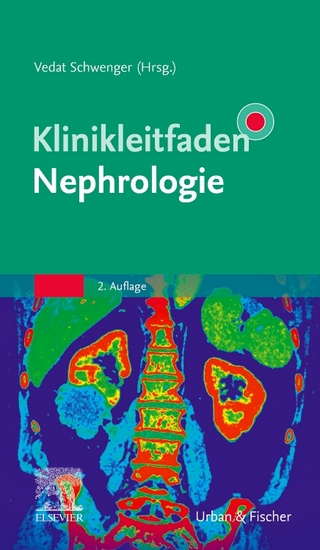
Renal Handling of Phosphate
Kluwer Academic/Plenum Publishers (Verlag)
978-0-306-40368-2 (ISBN)
- Titel ist leider vergriffen;
keine Neuauflage - Artikel merken
My reading of these chapters and my learning so much from them convinced me that it is, and my pride was heightened in being asked to write the foreword for this book.
1 Indices for the Measurement of the Renal Handling of Phosphate.- 1. Introduction.- 2. Glomerular Filtration and Tubular Transport.- 2.1. The Composition of the Glomerular Filtrate.- 2.2. The Direction of Tubular Transport.- 2.3. The Concept of a Limit or Threshold Concentration.- 3. Threshold Concentration and Splay for Phosphate.- 3.1. The Relation between Maximum Reabsorption and Glomerular Filtration.- 3.2. Splay.- 4. Indices for the Measurement of the Renal Handling of Phosphate.- 4.1. The Renal Threshold Concentration for Phosphate.- 4.2. The Phosphate Clearance.- 4.3. The Reabsorbed or Excreted Fraction of the Load.- 4.4. The Excretion Rate of Phosphate.- 4.5. The Plasma Phosphate Concentration.- 4.6. The Choice between Indices.- 5. References.- 2 Sites of Renal Tubular Reabsorption of Phosphate.- 1. Introduction.- 2. Phosphate Transport between the Glomerulus and the Late Accessible Proximal Convolution of the Superficial Nephron.- 2.1. Phosphate Reabsorption in the Intact Animal.- 2.2. Phosphate Reabsorption in the Absence of Parathyroid Hormone.- 2.3. Phosphate Secretion in the Proximal Tubule.- 3. Phosphate Transport in the Loop.- 3.1. Evaluation by Micropuncture of the Late Accessible Proximal and Early Accessible Distal Convolutions Sampled at Random.- 3.2. Evaluation by Micropuncture of the Late Accessible Proximal and Early Accessible Distal Convolutions of the Same Nephron.- 3.3. Evaluation by Microinjection into the Late Accessible Proximal and Early Accessible Distal Convolutions.- 3.4. Evaluation by in Vivo Microperfusion.- 3.5. Evaluation by in Vitro Microperfusion.- 3.6. Characteristics of Loop Phosphate Reabsorption.- 4. Phosphate Transport in the Terminal Nephron.- 4.1. Evaluation by Micropuncture.- 4.2. Evaluation by Distal Tubular Microperfusion and Microinjection.- 4.3. Possible Sites of Phosphate Reabsorption in the Terminal Nephron.- 5. Conclusions.- 6. References.- 3 Is Phosphate Secreted by the Kidney?.- 1. Introduction.- 2. Phosphate Secretion by Kidneys of Lower Vertebrates.- 2.1. Fishes.- 2.2. Amphibians.- 2.3. Reptiles.- 2.4. Birds.- 2.5. Summary of Phosphate Secretion by Nonmammalian Vertebrates.- 3. Is Phosphate Secreted by the Mammalian Kidney?.- 3.1. Use of Clearance Techniques to Assess Phosphate Secretion by the Mammalian Kidney.- 3.2. Evidence of a Peritubular-to-Luminal Flux of Phosphate in the Mammalian Kidney.- 4. Conclusions.- 5. References.- 4 Cellular Mechanisms of Phosphate Transport.- 1. Introduction.- 2. Transmembrane Movement of Phosphate.- 2.1. Membrane Composition and Structure.- 2.2. Phosphate-Membrane Interactions.- 2.3. Enzymes of the Brush-Border Membrane.- 3. Characteristics of Phosphate Transport.- 4. Nonhormonal Factors.- 4.1. Sodium Dependency of Phosphate Transport.- 4.2. Glucose and Phosphate Transport.- 4.3. Effect of Acid-Base Balance on Phosphate Transport.- 5. Hormonal Regulation of Phosphate at the Cellular Level.- 5.1. Mechanism of Regulation by Cyclic Nucleotides.- 5.2. Other Cellular Mechanisms in Regulation of Phosphate Transport.- 6. References.- 5 The Effects of Parathyroid Hormone on Renal Phosphate Handling.- 1. Introduction.- 2. Effects of PTH in Various Segments of the Nephron.- 2.1. Proximal Convoluted Tubule.- 2.2. Pars Recta-Loop of Henle.- 2.3. Distal Convoluted Tubule and Terminal Nephron.- 13. Mode of Action of PTH.- 4. Mechanism of the Phosphaturie Effect of PTH.- 4.1. Role of Adenyl Cyclase-cAMP System.- 4.2. Role of Inhibition of Sodium Reabsorption-Sodium-Dependent Phosphate Transport Hypothesis.- 4.3. Role of Tubular Fluid Alkalinization.- 5. References.- 6 Effects of Hormones Other than Parathyroid Hormone on Renal Handling of Phosphate.- 1. Introduction.- 2. Growth Hormone (GH).- 2.1. Effects of GH on Serum Pi Levels.- 2.2. Extrarenal Effects of GH on Pi Metabolism.- 2.3. Effects of GH on Renal Handling of Pi.- 2.4. Factors Related to the Effects of GH on Tubular Transport of Pi.- 3. Vasopressin (Antidiuretic Hormone; ADH).- 3. 1. Effects of ADH on Serum Pi Levels.- 3.2. Effects of ADH on Renal Handling of Pi.- 4. Thyroid Hormones (Thyroxine and Triiodothyroine).- 4.1. Effects of Thyroid Hormones on Serum Pi Levels.- 4.2. Extrarenal Effects of Thyroid Hormones on Pi Metabolism.- 4.3. Effects of Thyroid Hormones on Renal Handling of Pi.- 4.4. Factors Related to the Effects of Thyroid Hormones on Renal Handling of Pi.- 5. Calcitonin (CT).- 5.1. Effects of CT on Serum Pi Levels.- 5.2. Extrarenal Effects of CT on Pi Metabolism.- 5.3. Renal Effects of CT.- 5.4. Factors Related to the Effects of CT on Renal Handling of Pi.- 6. Glucagon.- 6.1. Effects of Glucagon on Serum Pi Levels.- 6.2. Effects of Glucagon on Renal Handling of Pi.- 6.3. Factors Related to the Effects of Glucagon on Renal Handling of Pi.- 7. Insulin.- 7.1. Effects of Insulin on Serum Pi Levels.- 7.2. Effects of Insulin on Renal Handling of Pi.- 7.3. Factors Related to the Effects of Insulin on Renal Handling of Pi.- 8. Catecholamines.- 8.1. Effects of Catecholamines on Serum Pi Levels.- 8.2. Effects of Catecholamines on Renal Handling of Pi.- 9. Glucocorticoids.- 9.1. Effects of Glucocorticoids on Serum Pi Levels.- 9.2. Extrarenal Effects of Glucocorticoids on Pi Metabolism.- 9.3. Effects of Glucocorticoids on Renal Handling of Pi.- 9.4. Factors Relating to the Effects of Glucocorticoids on Renal Handling of Pi.- 9.5. Circadian Rhythm of Pi Excretion and Glucocorticoids.- 10. Estrogens.- 10.1. Effects of Estrogens on Serum Pi Levels.- 10.2. Effects of Estrogens on Extrarenal Metabolism of Pi.- 10.3. Effects of Estrogens on Renal Handling of Pi.- 11. Various Other Hormones.- 11.1. Angiotensin II.- 11.2. "Natriuretic Hormone".- 11.3. Prostaglandins (Bartter's Syndrome).- 12. Tumoral Hyperphosphaturia.- 13. References.- 7 Effects of Vitamin D and Its Metabolites on Renal Handling of Phosphate.- 1. Studies in Humans.- 2. Studies in Animals.- 3. Summary.- 4. References.- 8 Effect of Urinary Alkalinization on Renal Phosphate Reabsorption.- 1. Introduction.- 2. Clearance Studies.- 3. Micropuncture Studies.- 4. Microperfusion Studies.- 5. Studies of Luminal Membrane Vesicles.- 6. Theoretical Considerations.- 6.1. Relation between H+ and Phosphate Transport: Phosphate as a Buffer System.- 6.2. Use of Phosphate in Renal Acidification Studies.- 6.3. Physicochemical Properties of Anions.- 6.4. Mechanism of Action of Acetazolamide and Bicarbonate.- 7. Clinical Implications.- 8. References.- 9 Tubular Adaptation to the Supply and Requirement of Phosphate.- 1. Introduction.- 2. Assessment of the Overall Tubular Capacity to Transport Pi.- 3. Tubular Adaptation to the Dietary Supply of Phosphate.- 4. Tubular Adaptation to the Phosphate Demand of the Organism.- 5. Role of l,25(OH)2D3 in the Tubular Adaptation in Pi Transport.- 6. Localization of the Tubular Adaptation in Pi Transport.- 6.1. Influence of Phosphate Supply.- 6.2. Influence of Phosphate Demand through EHDP Treatment.- 7. Tubular Adaptation and Acute Phosphaturic Response to PTH.- 7.1. Influence of Dietary Phosphate.- 7.2. Influence of EHDP.- 7.3. Influence of l,25(OH)2D3.- 8. Mechanism of Tubular Adaptation.- 9. Tubular Adaptation and Disorders of the Renal Pi Transport.- 10. Conclusions.- 11. References.- 10 Role of Extracellular Fluid Volume Expansion and Diuretics in Renal Handling of Phosphate.- 1. Introduction.- 2. Volume Expansion and Phosphate Excretion in the Rat and the Dog.- 3. Volume Expansion and Phosphate Excretion in Humans.- 4. Mechanism of Phosphaturia during Volume Expansion.- 5. Effects of Diuretics on Phosphate Excretion.- 5.1. Osmotic Agents.- 5.2. Mercurial Diuretics.- 5.3. Carbonic Anhydrase Inhibitors.- 5.4. Potassium-Sparing Diuretics.- 6. References.- 11 Influence of Calcium on Renal Handling of Phosphate.- 1. Introduction.- 2. Physiologic Studies.- 2.1. Effect of Calcium Infusion on the Serum Inorganic Phosphate Concentration and Its Filtration Characteristics.- 2.2. Influence of Calcium on Renal Hemodynamics.- 2.3. Effect of Calcium Infusion on the Absorption of Phosphate by the Renal Tubule.- 2.4. Studies during Hypocalcemia.- 2.5. Summary of Physiologic Studies.- 3. Pathologic Studies.- 3.1. Introduction.- 3.2. Renal Glomerular Insufficiency.- 3.3. Primary Hyperparathyroidism.- 3.4. Vitamin-D-Resistant Rickets with Hypophosphatemia.- 3.5. Hypoparathyroidism.- 4. References.- 12 Renal Handling of Phosphate in Renal Failure.- 1. Introduction.- 2. Factors Affecting Renal Handling of Phosphate in Renal Failure.- 3. Role of Serum Phosphorus.- 4. Renal Handling of Phosphate after Renal Transplantation.- 5. References.- 13 Tubular Defects in Phosphate Reabsorption in Clinical Medicine.- 1. Introduction.- 2. Diseases Manifested by a Tubular Phosphate Leak.- 2.1. Primary Renal Tubular Phosphate Hyperexcretion.- 2.2. Secondary Renal Tubular Phosphate Hyperexcretion.- 2.3. Phosphate Loss as Part of a Complex Tubulopathy.- 3. Conditions Associated with Increased Renal Tubular Retention of Phosphate.- 3.1. Pseudohypoparathyroidism (PHP).- 3.2. Other Conditions of Phosphate Retention.- 4. References.
| Erscheint lt. Verlag | 1.5.1980 |
|---|---|
| Zusatzinfo | biography |
| Sprache | englisch |
| Gewicht | 650 g |
| Themenwelt | Medizinische Fachgebiete ► Innere Medizin ► Nephrologie |
| Naturwissenschaften ► Biologie ► Zoologie | |
| ISBN-10 | 0-306-40368-4 / 0306403684 |
| ISBN-13 | 978-0-306-40368-2 / 9780306403682 |
| Zustand | Neuware |
| Informationen gemäß Produktsicherheitsverordnung (GPSR) | |
| Haben Sie eine Frage zum Produkt? |
aus dem Bereich


